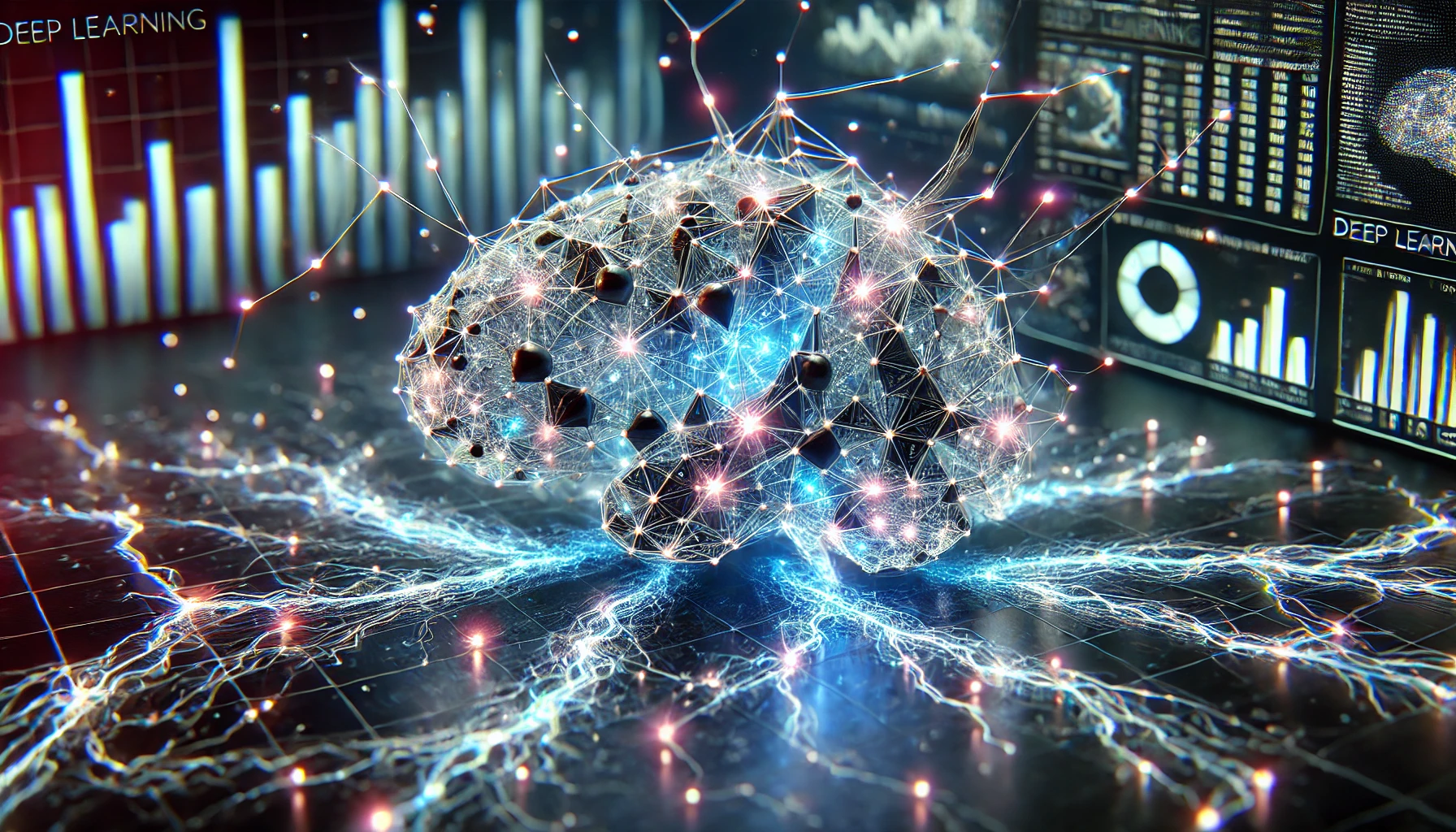What is Deep Learning?
Deep learning encompasses a branch of artificial intelligence (AI) that mimics the human brain’s neural networks to process data and create patterns for decision making. This powerful technology is a subset of machine learning and is integral to many AI applications in our lives today. But what exactly is deep learning, and how does it work? In this blog post, we’ll dive deep into the intricacies, its history, types, use cases, and more.
Background of Deep Learning
Deep learning has revolutionized the field of AI, offering unprecedented accuracy and efficiency in various applications. From image and speech recognition to autonomous driving, deep learning models have become the backbone of modern AI systems.
Origin/ History
Deep learning’s roots can be traced back to the development of artificial neural networks in the mid-20th century. Initially inspired by the structure and functioning of the human brain, researchers aimed to create machines that could mimic human intelligence. Here’s a brief timeline highlighting key milestones in the evolution:
| Year | Milestone |
|---|---|
| 1943 | Warren McCulloch and Walter Pitts created a computational model for neural networks. |
| 1957 | Frank Rosenblatt developed the Perceptron, an early neural network model. |
| 1980s | The backpropagation algorithm was popularized, enabling the training of deep neural networks. |
| 2006 | Geoffrey Hinton and his team made significant advances in, leading to the resurgence of neural networks. |
| 2012 | Deep learning gained widespread attention when a neural network won the ImageNet competition, showcasing its superiority in image recognition tasks. |
Types of Deep Neural Networks
Deep neural networks come in various forms, each suited for different tasks and applications. Here are some common types:
- Convolutional Neural Networks (CNNs): Primarily used for image recognition and classification.
- Recurrent Neural Networks (RNNs): Effective for sequential data processing, such as language modeling and time series prediction.
- Generative Adversarial Networks (GANs): Used for generating synthetic data and enhancing data augmentation.
- Autoencoders: Employed for data compression and noise reduction.
How Does Deep Learning Work?
Deep learning models learn by processing vast amounts of data through multiple layers of artificial neurons. Each layer extracts increasingly complex features from the input data. Here’s a simplified explanation of how it works:
- Data Input: Raw data is fed into the neural network.
- Layer Processing: Each layer transforms the data, extracting key features.
- Training: The model learns by adjusting weights based on errors in predictions.
- Output: The final layer produces the desired output, such as classification or prediction.
Pros and Cons
Understanding the advantages and limitations of is crucial for its effective application.
| Pros | Cons |
|---|---|
| Ability to process and analyze complex data | Requires large amounts of data and computational power |
| High accuracy in tasks such as image and speech recognition | High resource consumption and energy usage |
| Continuous improvement through additional data | Potential for overfitting and learning biases from data |
Leading Companies in Deep Learning
Several companies have emerged as leaders in the space, driving innovation and development. Here are some of the most notable ones:
Google DeepMind
- Google DeepMind is renowned for its revolutionary AlphaGo program, which famously defeated a world champion in the game of Go. Beyond gaming, DeepMind is deeply engaged in developing advanced AI systems that have a wide array of applications, particularly in healthcare, where their algorithms aim to improve diagnostics and patient outcomes.
OpenAI
- OpenAI, the organization behind the development of GPT-3, one of the most sophisticated language processing models to date, focuses on creating and promoting friendly AI that benefits humanity as a whole. Their work includes groundbreaking research in artificial general intelligence (AGI) with the aim of ensuring that AGI’s advantages are as widely and evenly distributed as possible.
NVIDIA
- NVIDIA is pivotal in the AI industry, providing the powerful GPUs necessary for training complex AI models. In addition to hardware, NVIDIA develops a suite of software solutions that facilitate AI and machine learning research and applications across various fields, enhancing computational capabilities and efficiency.
IBM
- IBM’s Watson is one of the most recognized AI platforms globally, offering a range of applications from healthcare to finance. IBM continues to be a leader in AI research, developing new technologies that leverage machine learning and deep learning to solve real-world problems.
Facebook AI Research (FAIR)
FAIR is at the forefront of AI and machine learning research, focusing on creating technologies that not only enhance Facebook’s social media platform but also have broader applications in society. Their research includes advancements in computer vision, NLP, and complex systems, contributing significantly to the AI community.
Examples and Applications
Deep learning has a profound impact on various industries. Here are some notable examples and applications:
- Healthcare
- Disease Diagnosis: Assists in diagnosing diseases by analyzing medical images and patient data.
- Personalized Treatment Plans: Develops customized treatment plans based on patient-specific data.
- Finance
- Fraud Detection: Identifies fraudulent activities by analyzing transaction patterns.
- Algorithmic Trading: Optimizes trading strategies by predicting market trends.
- Automotive
- Autonomous Driving: Powers self-driving car technologies by processing sensor data.
- Predictive Maintenance: Predicts vehicle component failures to perform timely maintenance.
- Retail
- Customer Behavior Analysis: Analyzes purchasing patterns to personalize customer experiences.
- Inventory Management: Predicts product demand to optimize inventory levels.
- Entertainment
- Content Recommendation: Suggests personalized content to users on streaming platforms.
- Deepfake Detection: Identifies manipulated media using advanced detection algorithms.
- Manufacturing
- Quality Control: Enhances production quality by detecting defects in real-time.
- Predictive Maintenance: Anticipates equipment failures to prevent production downtime.
References
- IBM. (n.d.). Deep learning.
- TechTarget. (n.d.). Deep learning (deep neural network).
- GeeksforGeeks. (n.d.). Introduction to deep learning.
- DeepLearning.AI
- Coursera. (n.d.). What is deep learning?

